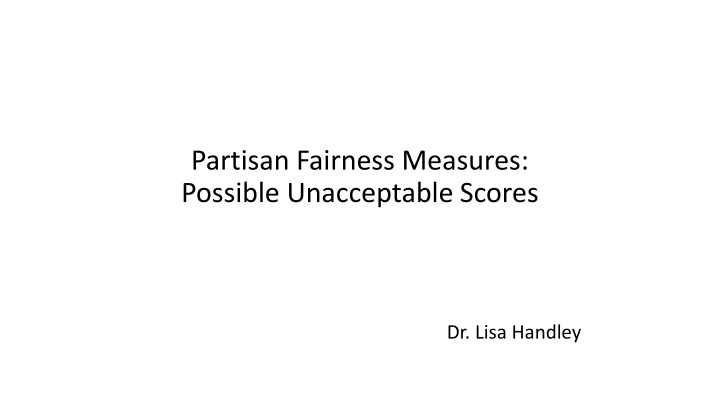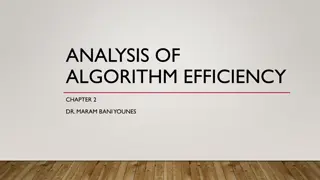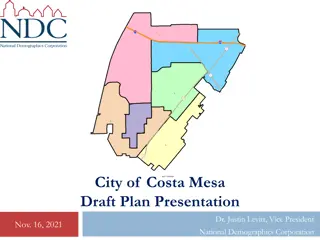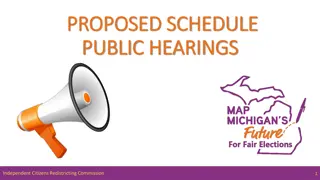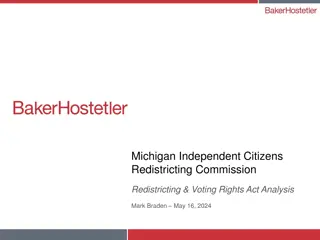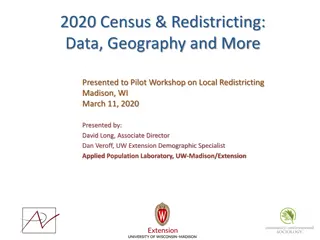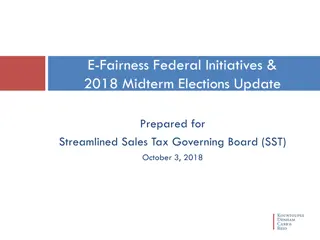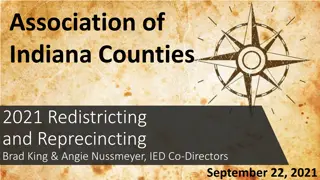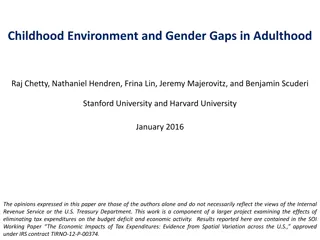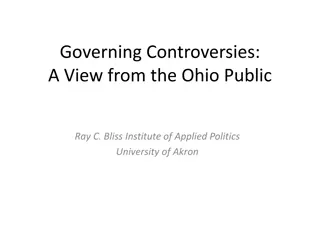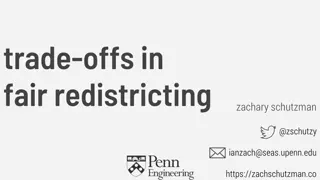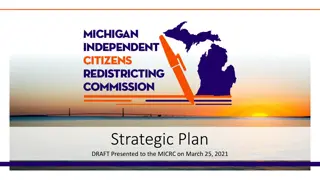Analysis of Partisan Fairness Measures and Efficiency Gaps in Redistricting Plans
This analysis delves into partisan fairness measures and efficiency gaps in various redistricting plans challenged in Ohio, Pennsylvania, Wisconsin, and Michigan. Dr. Lisa Handley and other experts discuss thresholds for unconstitutional plans and the impact of lopsided margins. The Efficiency Gap, argued to have a significant impact on legislative fairness, is a key focus.
Download Presentation

Please find below an Image/Link to download the presentation.
The content on the website is provided AS IS for your information and personal use only. It may not be sold, licensed, or shared on other websites without obtaining consent from the author.If you encounter any issues during the download, it is possible that the publisher has removed the file from their server.
You are allowed to download the files provided on this website for personal or commercial use, subject to the condition that they are used lawfully. All files are the property of their respective owners.
The content on the website is provided AS IS for your information and personal use only. It may not be sold, licensed, or shared on other websites without obtaining consent from the author.
E N D
Presentation Transcript
Partisan Fairness Measures: Possible Unacceptable Scores Dr. Lisa Handley
Ohio A. Philip Randolph Institute v. Householder Ohio challenge to 2011 congressional plan Year Efficiency Gap Year Mean Median 2012 22.4 R 2012 7.8 R 2014 9.0 R 2014 2016 8.7 R 2016 2018 20.0 R 2018 5.0 R
League of Women Voters of Pennsylvania v. Commonwealth of Pennsylvania Pennsylvania challenge to congressional plan Year Votes/Seats for Democrats Year Mean Median 2012-2016 5.9 R 2012 50.8% / 27.8% 2014 44.5% / 27.8% Year Efficiency Gap 2016 45.9% / 27.8% 2012 24 R 2014 15 R 2016 19 R
Whitford v. Gill Wisconsin challenge to state assembly plan Year Votes/Seats for Democrats Year Efficiency Gap 2012 51.4% /39.4% 2012 13.3 R 2014 48.0% /39.4% 2014 10.0 R
League of Women Voters of Michigan v. Benson Michigan challenge to all 3 redistricting plans Efficiency Gap Year Mean Median Difference Year Congress State Senate State House Congress 7.7 R State Senate 6.1 R 2012 19.7 R 12.3 R State House 6.9 R 2014 16 R 20.0 R 2016 13 R
Partisan Fairness Scores on Current Plans Using Composite Index Measure Congress State Senate State House Votes / Seats 52.3 / 35.7 52.3 / 44.7 52.3 / 45.5 Efficiency Gap 21.2 10.9 11.6 Mean Median Difference 5.5 5.1 6.1 Lopsided Margin 13.1 8.6 10.1
Efficiency Gap Stephanopoulos and McGhee argue for 8% threshold above which legislative plans should be considered presumptively unconstitutional Simon Jackman testified that 7% or higher should be considered legally significant (at least in part because over 95% of plans with an EG greater than 7% in the first year will favor the party benefiting from the EG for the remainder of the decade)
